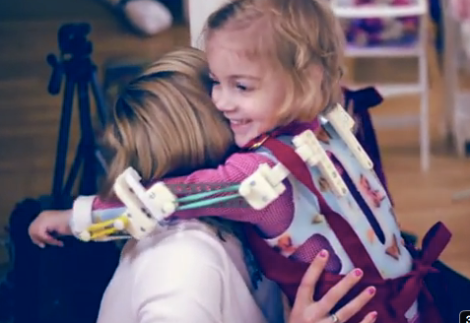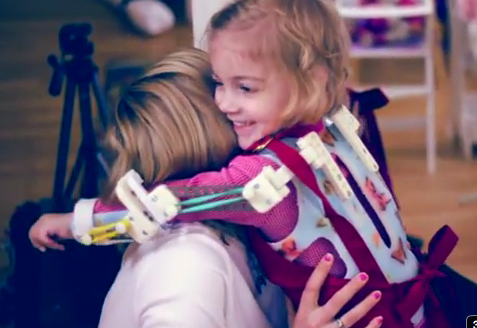
This super-sweet toddler, whose name is Emma, has a congenital disorder that means she doesn’t have the muscle strength to lift her arms by herself. But hey, no big deal — this robot exoskeleton can do it for her. And because it’s 3D-printed out of inexpensive, lightweight plastic, replacement is no big deal when she outgrows it (or if she breaks a part). As far as I’m concerned, this singlehandedly justifies the existence of 3D printing.
Emma’s exoskeleton, which she calls her “magic arms,” is based on the Wilmington Robotic Exoskeleton, or WREX. The WREX is typically made of metal, but Emma’s too small for such heavy equipment. So researchers Tariq Rahman and Whitney Sample figured out how to make her a lightweight plastic WREX using a Dimension 3D printer. That also makes Emma’s WREX modular — if she needs a replacement part, they can just print one up for her, out of the same plastic used in LEGOs.
It’s basically not possible to watch this video and not get a mad rush of “oh my god, living in the future is amazing!” And also maybe a little something in your eye.



